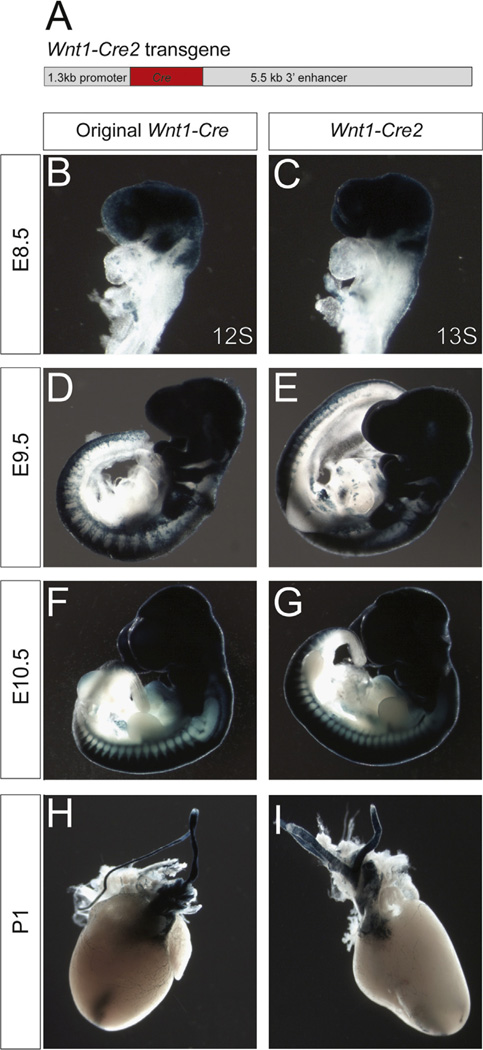Fig. 4.
The new Wnt1-Cre2 transgenic mouse line mediates recombination in the neural crest. (A) Schematic representation of the new Wnt1-Cre2 transgenic construct. (B–I) β-galactosidase staining of Wnt1-CreTg/+; ROSA26R+/− embryos from the original line (B,D,F,H) compared with newly generated Wnt1-Cre2Tg/+; ROSA26R+/− transgenic mice (C,E,G,I), in which the Wnt1 coding sequence is not included in the transgene, at progressive stages of development. Comparable staining is observed in the neuroepithelium and migrating neural crest of E8.5 embryos in Wnt1-Cre2Tg/+; ROSA26R+/− (C) compared to the original Wnt1-CreTg/+; ROSA26R+/− (B). No overt difference was seen at E9.5 (D,E) or E10.5 (F,G), or in whole mount β-galactosidase staining of hearts at P1 (H,I).

